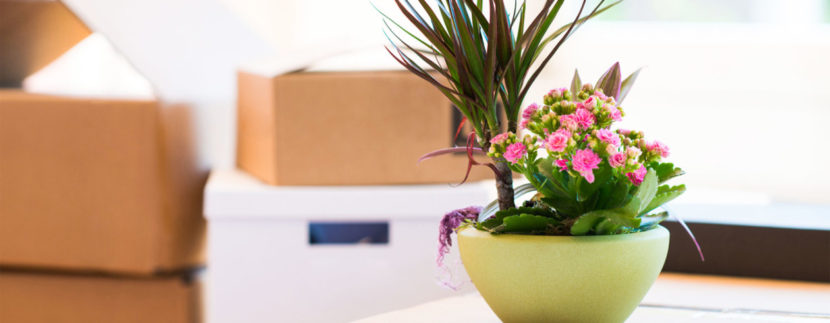How to Ship Plants: Keep Your Beloved Buds Safe During a Move

How to Ship Plants: Keep Your Beloved Buds Safe During a Move.
Transporting philodendrons and fiddle-leaf figs during a move can be tricky, so knowing how to ship plants is very useful.

petrograd99/iStock
Transporting philodendrons and fiddle-leaf figs during a move can be tricky, so knowing how to ship plants is very useful.
Few moving companies are willing to throw plants on the truck, especially for trips across state lines and across the country.
“Some states are really sensitive about plants,” says James Sullivan, president of Humboldt Storage & Moving of Canton, MA. “Officials are afraid of bringing in bugs or other problems into the state.”
Plus, most plants wouldn’t survive the rough ride and high temperatures inside a truck on a long-haul move.
To keep your plants safe during a move, the ideal solution is to pack them in your car, but that’s not always feasible. The next best bet? Ship ’em. While throwing your beloved monstera in a box might not sound wise, it’s actually a tried-and-true method that many plant parents swear by.
Save on shipping costs
Shipping is generally calculated by weight and distance. So to save on shipping costs, always remove your houseplants from heavy planters, containers, and pots, says Terese Kerrigan, director of marketing at FreightCenter.com. Thoroughly clean the plant containers, and put them on your moving truck for transport.
Avoid ‘cooking’ the roots
Put the unpotted plant in a lightweight, open-top disposable plastic container to contain the dirt and roots. Whatever you do, avoid putting the roots inside a tight plastic bag with no ventilation. Not only can the roots break, but the restrictive plastic can also overheat and “cook” them, depending on the time of year, says Gloria Day, a member of the Association of Garden Communicators, a professional organization of writers and TV personalities.
Day recommends encasing the roots in shredded paper and mesh bulb bags. Then, water the root until it’s just moist so the plant has something to drink during the journey.
Buy the right-size box
To keep the plant from tipping inside the box, make sure the mass of roots fits as snugly as possible at the bottom of the box to prevent the plant from moving too much, says Kerrigan.
The box you choose should be wide and tall enough to leave a few inches between the plant and the sides of the box.
Clearly write “live plants inside”—and which side is up—on the top and sides of the box.
How to pack your plants
To prevent the cardboard from getting soggy, use plastic to create a flat moisture barrier between the bottom of the plant and the bottom of the box.
Day protects the plant and roots by filling in any extra room in the box with soft material.
“Newspaper, packing peanuts, or egg cartons work well here,” says Day.
You can even put a smaller plant in a box with a bigger one to keep them from moving around too much in transit.
Choose the quickest and safest shipping method
The box will obviously need to be sealed on all four sides, meaning your plant won’t get much air.
“That’s why it’s important to choose a rapid, temperature-controlled shipping method so your plants undergo as little shock as possible,” says Kerrigan. To that end, avoid shipping your plants over a weekend or a holiday, as they can lose a day or two of transit time.
Keep in mind the possibility that larger, heavier items may end up on top of and next to your plants. If you’re worried about your box getting crushed, Kerrigan recommends inquiring about nonstackable shipping options (which some carriers offer for an additional cost).
Couriers that ship plants
Association of Garden Communicators member Lois J. Devries has successfully shipped plants through UPS.
“While it costs a little bit of money, the plants were in great shape when they arrived,” Devries says.
Other carriers that ship plants include the U.S. Postal Service and FedEx—just make sure to check the company guidelines for doing so.
You can also see each state’s rules for what plants are allowed in by visiting the National Plant Board’s state by state guidelines. California, for instance, won’t allow any citrus plants in.
The post How to Ship Plants: Keep Your Beloved Buds Safe During a Move appeared first on Real Estate News & Insights | realtor.com®.
